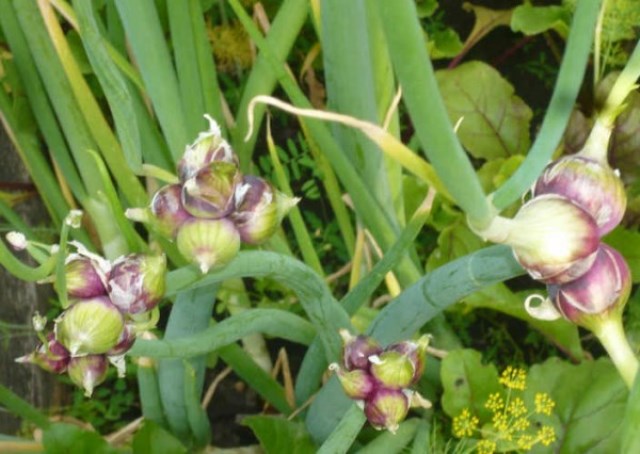Layered onion relatively recently appeared on garden beds. This plant has an exotic appearance, but in fact its cultivation does not cause difficulties. Vegetable has a high yield, unpretentious care and will serve as a decorative ornament of your garden.
Table of contents
Description of varieties of onion stacked
Vegetable got its name because of the unusual appearance. On its high strong arrows, instead of the usual inflorescences, air fruits are formed in several floors-tiers.This variety of onions has a few more names - “viviparous”, “horned”, “Egyptian”.
The feathers of the bow are fisty, hollow, distinguished by their special juiciness. The above-ground arrow grows into a height of about 40 cm, on which inflorescences form first, and then onions. From the first tier, an arrow is also formed, and then aerial bulbs are formed. Thus, the plant can have up to 4 tiers.
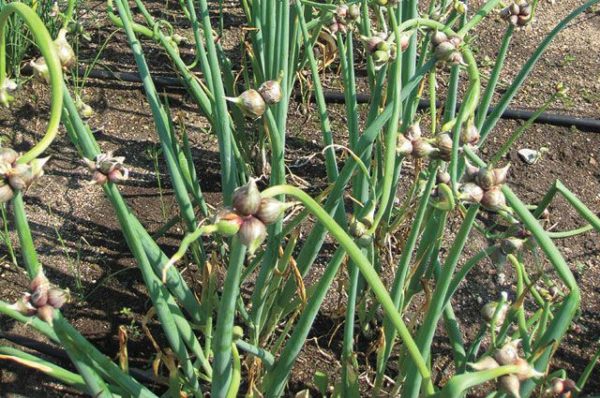
It is worth noting that on the first tier of the bulbs are the largest, with a diameter of up to 3 cm, weighing up to 25 grams. The higher the tier, the smaller the bulbs become. Inflorescence can have from 3 to 30 heads. Fruits are crispy, sharp, with dense skin.
Beneficial features
Tiered onion has a rich vitamin and mineral composition.. In its beneficial properties of superior varieties of onions. It has anti-inflammatory properties and strengthens the immune system. It contains a large amount of carotene and vitamin C. It also contains vitamins E, PP, group B.Calcium, potassium, iron, phosphorus, magnesium, manganese, which are included in the mineral composition of the product, have a positive effect on the general condition of the body.
With moderate and regular consumption, this vegetable is able to normalize pressure, increase the tone of the heart muscle and vascular walls. It improves skin condition, prevents certain diseases of the stomach, works as an antibacterial agent.
It is not recommended to use vegetables for people with individual intolerance to the product, high acidity, peptic ulcer and pancreatitis. A day is enough to eat 1-2 small onions or 50 g of fresh green feathers.
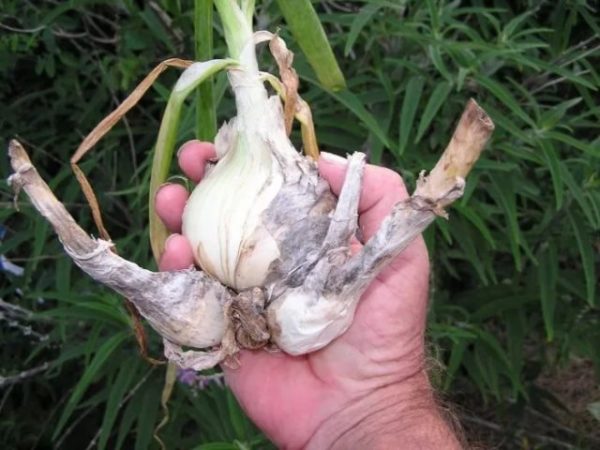
Features of planting and breeding
Tiered onions can be grown in both the northern and southern regions. The plant is unpretentious and gives high yields. There are also no special requirements for the soil, but if the soil is not fertile, then it is necessary to apply organic fertilizers before planting. For planting it is better to choose an open sunny area, then the plant will bear fruit well for 4-5 years.
Air bulbs from the second or third tier are used for planting.. It can also be propagated by dividing the mother bush. Bulbs for planting material collected at the end of summer, so they have time to put down roots to the cold weather and strengthen enough in the ground. It is necessary to use only not sprouted heads. In spring, the bow is convenient to propagate by dividing the bushes.
Before planting, the soil should be well loosened, organic fertilizers (cow dung, bird droppings) should be applied. The heads sink into the ground about 4 cm, at a distance of 6-8 cm from each other. Between the rows should be at least 25 cm. This scheme is suitable for large or underground bulbs. If the planting material is small, the distance between the heads should be reduced to 5 cm.
When growing onions in a residential environment or a greenhouse on greens, the heads are planted in boxes with nutrient soil tightly behind each other and watered abundantly. Fresh greens can be harvested after 20 days.
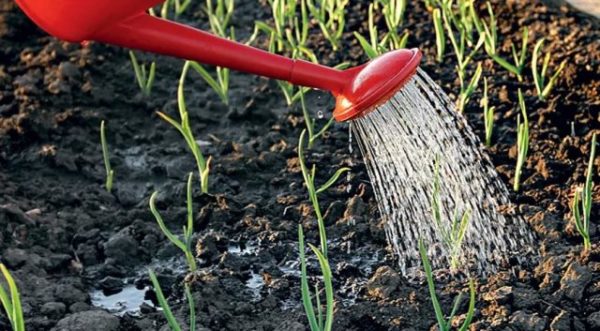
Care
It is easy to care for a multi-tiered grade, but you should consider some features:
- The soil under the plants should not be too wet, otherwise the bulbs may rot.
- It is necessary to loosen the soil weekly in order to saturate it with oxygen.
- During active growth (in early summer), plants should be fed with special mineral fertilizers for vegetable crops.
- When the onions appear on the green feathers, the arrows should be tied to the support (pegs) so that they do not break off.
- Regularly remove weeds as they occur.
With many years of cultivation take care of onions need to start in early spring. As soon as the snow comes off the beds, it is necessary to remove all the dead feathers last year. You should also thin the plants. It is enough to leave 2 heads in each mother socket. Torn roots can be used for planting or to eat.
Cleaning and storage
Onion greens can be cut for the first time after 25 days. The second time the foliage is cut in 25-30 days. Cutting is not recommended for the third time, as the yield of aerial bulbs will decrease. The bulbs themselves ripen completely in late August. They become brown in color and are easily separated from the arrow. After harvesting, they can be planted immediately.
If they are sent for storage, they need to be dried and placed in paper bags.They are well stored in unheated premises, in attics, in the refrigerator. The bulbs are not afraid of frost, they retain their vitality even at a temperature of -20 degrees.
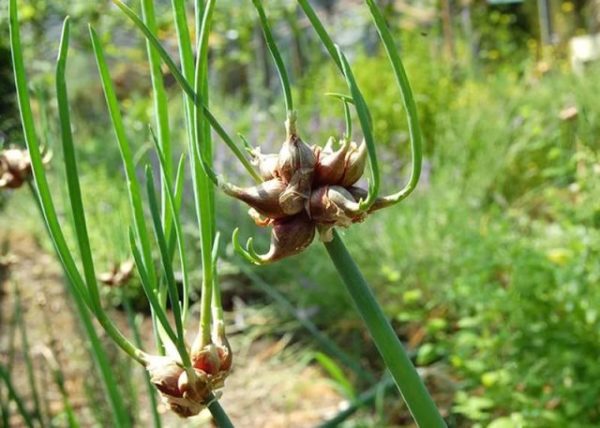
Diseases and pests
Tiered onions resistant to diseases but sometimes it is affected by some fungal diseases - powdery mildew, and peronospora. In this case, the greens urgently processed Bordeaux liquid. A week later, repeat the procedure. A solution with soda ash can also help (for 1 liter of water 1 tbsp of soda).
Of the pests, onions are attacked by weevils and onion flies. To avoid this, you should remove dried, rotten feathers and weeds in time.
In growing a multi-tiered variety is not difficult. At the same time, it is distinguished by excellent yield and its beneficial properties. A decorative exotic plant will adorn your beds with dignity.
